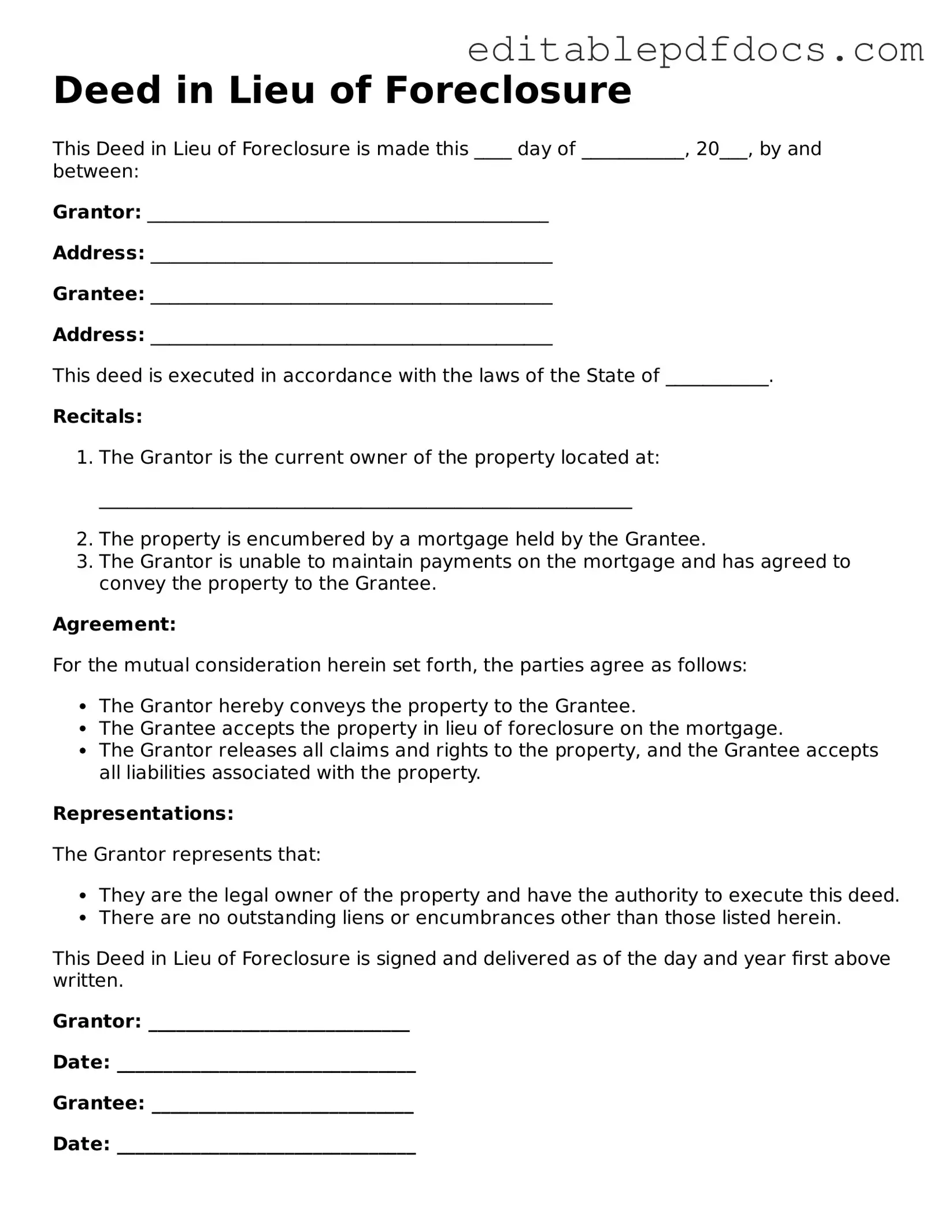Filling out a Deed in Lieu of Foreclosure form can be a daunting task. Many individuals make mistakes that can complicate the process or lead to unfavorable outcomes. One common error is failing to provide accurate property information. This includes the legal description of the property and its address. Inaccuracies can delay the process and may result in legal challenges down the line.
Another frequent mistake is neglecting to review the terms of the mortgage. It is essential to understand the obligations and rights associated with the mortgage before signing any documents. Some individuals may not realize that they are still responsible for certain debts even after completing the deed.
Many people also overlook the importance of obtaining a clear title. Before executing a Deed in Lieu of Foreclosure, it is crucial to ensure that there are no outstanding liens or claims against the property. Failing to address these issues can lead to complications that may hinder the transfer of ownership.
In addition, individuals often forget to consult with a legal professional. While it may seem straightforward, the implications of a Deed in Lieu of Foreclosure can be significant. Seeking legal advice can provide clarity and help avoid mistakes that could have been easily prevented.
Another mistake is not considering the tax implications. A Deed in Lieu of Foreclosure can have consequences for tax liability. It is important to understand how this action may affect your financial situation and to consult a tax professional if needed.
Some individuals rush through the signing process without fully understanding the document. Each section should be read carefully, and questions should be asked if anything is unclear. A rushed signature can lead to regret and potential legal issues later on.
Additionally, failing to keep copies of all documents is a common oversight. After the deed is signed, it is essential to retain copies for personal records. This can be invaluable in case of future disputes or questions regarding the transaction.
People may also underestimate the importance of notifying their lender. After executing the deed, it is necessary to inform the lender of the completed transaction. This helps ensure that all parties are on the same page and can prevent misunderstandings.
Lastly, individuals sometimes assume that a Deed in Lieu of Foreclosure will resolve all their financial issues. While it can be a helpful step, it is not a panacea. It is crucial to have a plan in place for moving forward after the deed is executed.
